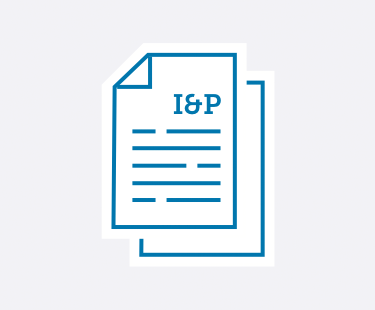

Learn practical strategies to handle emerging trends and leadership challenges in private schools.
No matter if you’re a School Head, Admission Director, Development Director, Board member, or any other private school administrator—Ideas & Perspectives®, ISM’s premier private school publication, has strategic solutions for the pervasive problems you face.
- Tuition not keeping pace with your expenses? In I&P, explore how to use strategic financial planning to create your budget and appropriately adjust your tuition.
- Enrollment dropping off? Discover how to implement the right admission and enrollment management strategies that engage your community—and fill your classrooms.
- Trouble retaining teachers? Learn how you can best support your teachers using ISM’s Comprehensive Faculty Development framework. Your faculty members will become more enthusiastic about their roles—which ultimately improves student outcomes.
- Fundraising campaigns not as successful as you’d hoped? Implement ISM’s practical advice and guidance to build a thriving annual fund, construct an effective capital campaign, and secure major donors—no matter your community size or location.
- Not sure how to provide professional development—for you and your staff? Learn ways to develop and fund a successful professional development strategy. You can improve teacher-centered satisfaction and growth, which in turn strengthens student-centered learning.
- Problematic schedule? You can master the challenges of scheduling with the help of ISM’s practical advice, based on our experience with hundreds of schools and our time-tested theories.
- And so much more.
I&P has shared targeted research, up-to-date insight, and sound theory with school leaders since 1975. More than 8,500 private school decision-makers find the answers to their schools’ administrative and governance matters in our advisory letter. We give you the strategic answers you need.
As an ISM Silver or Gold member, you not only receive issues online and in print 10 times a year, but you have access to 900+ articles in our web archive. Need help? It’s at your fingertips! Learn more and sign up for ISM's membership here.
Search
See the articles from our latest issue of Ideas & Perspectives.
ISM Stability Marker No. 1 Revisited: Cash Reserves, Debt, and Endowment
Volume 42 No. 16 // December 29, 2017
Cash reserves, coupled with low debt/no debt and endowment, have always ranked either first or second among the ISM Stability Markers®. These indicators of institutional sustainability, in widespread use now for more than two decades, serve as fundamental points of departure in all private school leadership-level strategic conversations and plans. ISM suggests that you, as Board President, Finance Chair, School Head, or Business Manager, as a matter of basic organizational discipline, monitor the status of the three components in ISM Stability Marker No. 1.
1. Already a member? Click here to login.
2. Not a member? Click here to become a member.
3. Not sure? We'll help you figure it out.
Summary and New Dimensions in Our Measure of Well-Being on Executive Leadership
Volume 42 No. 16 // December 29, 2017
ISM has studied the interrelationships among executive leadership, well-being, and school performance. In the previous three articles in this series, we have confirmed: ISM’s existing measure of executive leadership and the Head’s level of flourishing correlate with key school performance variables (school stability, financial strength, enrollment demand, and faculty culture); that neither the School Head’s experience in the field of education nor cumulative experience as School Head is related to the key school performance variables. There is no evidence a school improves with the Head's experience.The Head’s current length of tenure, however, was correlated with the school’s financial strength; enrollment demand is related to the strength of leadership and well-being of the School Head; and, the School Head’s level of professional support and well-being significantly influences the faculty culture—a central construct that enhances the student experience and the enrollment management process.
1. Already a member? Click here to login.
2. Not a member? Click here to become a member.
3. Not sure? We'll help you figure it out.
Avoid the Danger of Misinterpreting Research
Volume 42 No. 15 // December 1, 2017
We live in an information age where we are inundated daily with information on multiple devices. News feeds quickly summarize research from various sources, and weeding through all this information can be daunting. As a result, we often forget to put on our critical reading glasses.
1. Already a member? Click here to login.
2. Not a member? Click here to become a member.
3. Not sure? We'll help you figure it out.
Head Support and Evaluation Committee: Reporting to the Board
Volume 42 No. 15 // December 1, 2017
The Head Support and Evaluation Committee (HSEC) is the link between strategy and operations. It is a safe place for the Head to report ongoing progress toward his or her goals, and for the HSEC to advise, support, and hold the Head to account.1 But what is the relationship of the HSEC to the Board? After all, the reason for the HSEC is the Board’s inability to evaluate the Head. But, at the same time, the Board is the Head’s employer and has a “right to know” and ensure the Head is held accountable.
1. Already a member? Click here to login.
2. Not a member? Click here to become a member.
3. Not sure? We'll help you figure it out.
Carrying Out the Annual Administrative Agenda
Volume 42 No. 15 // December 1, 2017
In a previous article, we outlined the process for developing the annual administrative agenda. This, the fourth in the series on setting annual agendas, details how to orchestrate the administrative agenda in subsequent Leadership Team meetings.
1. Already a member? Click here to login.
2. Not a member? Click here to become a member.
3. Not sure? We'll help you figure it out.
True Endowment
Volume 42 No. 15 // December 1, 2017
What is the nature of true endowment? We note that true endowment is distinguished from quasi-endowment (which will be dealt with in a subsequent article). From your view as School Head, Business Manager, or Finance Committee member, what are the issues you should be considering?
1. Already a member? Click here to login.
2. Not a member? Click here to become a member.
3. Not sure? We'll help you figure it out.
We Need New Evidence for Old Meta-Messages
Volume 42 No. 14 // November 6, 2017
Private-independent schools have the daunting task of persuading families to purchase what is available free through their public school system. Despite national perceptions that public schools system are “broken,” the annual Gallup/PDK poll finds that parents are happy with their local public schools.1 We can’t rely on distaste for public education to drive our enrollment. More specifically, many of our families live in the same neighborhoods as the highest-ranked public schools in their area. Quite obviously, we must attract and re-attract families to our mission. While each school nuances these messages, schools have approached this task by delivering the following meta-messages to communicate the value of an independent education.
1. Already a member? Click here to login.
2. Not a member? Click here to become a member.
3. Not sure? We'll help you figure it out.
Scheduling Supports Advisory Program Success
Volume 42 No. 14 // November 6, 2017
The advisory program can be a distinguishing feature among your school’s offerings, and a source of multiple benefits to your students and their families. Of course, it must be well-planned and effectively implemented. There’s also the question of how advisory activities will be scheduled. The success of your advisory program depends, in part, on how it is incorporated into the school day, week, and year. As the School Head, meet with your scheduler to go over your expectations and ensure the schedule supports the scope and excellence of the program.
1. Already a member? Click here to login.
2. Not a member? Click here to become a member.
3. Not sure? We'll help you figure it out.
Executive Leadership: The Relationships Between Predictability and Support, the School Head's Well-Being, and Faculty Culture
Volume 42 No. 14 // November 6, 2017
In the first two articles in this series, we shared the results of our 2016 study on executive leadership, well-being, and school performance. The study validated the centrality of a high-quality, charismatic, and flourishing executive leader in the school’s ability to drive the school’s success, including enrollment demand.2 In this third article, we answer the question, “What predicts high scores on executive leadership?” Through the first two articles, we established that charismatic (but not excessively extroverted) leaders who guide schools with greater enrollment demand scored higher on our executive leadership measure. Of course, this assumes the school has a strategic plan and a strategic financial plan. In this article, we examine the factors that lead to high scoring on the executive leadership measure (Stability Marker No. 3). In other words, what are the major contributors to being a high-quality leader?
1. Already a member? Click here to login.
2. Not a member? Click here to become a member.
3. Not sure? We'll help you figure it out.
How to Jump Start a Stalled Fundraising Campaign
Volume 42 No. 13 // October 16, 2017
Many schools run capital campaigns and annual fund campaigns simultaneously. Capital campaigns are usually implemented over several years and are designed to increase capital assets such as new or improved facilities and/or growing endowment. Annual fund campaigns are repeated yearly and are most often created for enhancements for the current year. Balancing these two efforts requires clear goals, appropriate volunteer training, targeted donor solicitation, and a strategic sense of timing. A capital campaign, because of the size of the goal and the drive’s length, is more likely to falter than an annual campaign that in many schools has become habitual. Being prepared with “jump-starting” strategies can mean the difference between success and failure.
1. Already a member? Click here to login.
2. Not a member? Click here to become a member.
3. Not sure? We'll help you figure it out.


